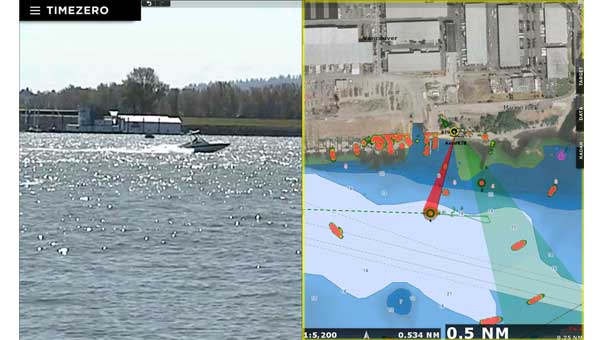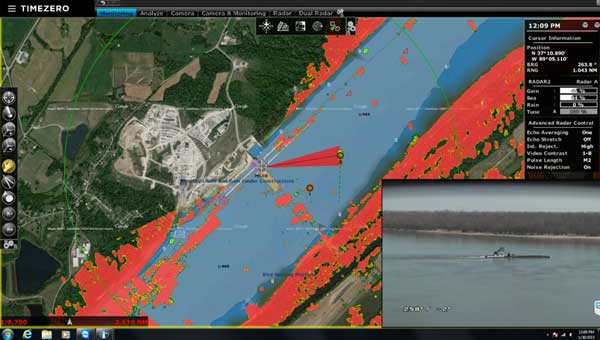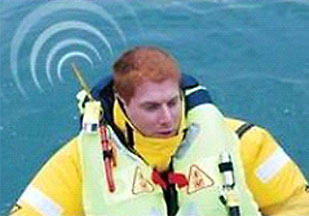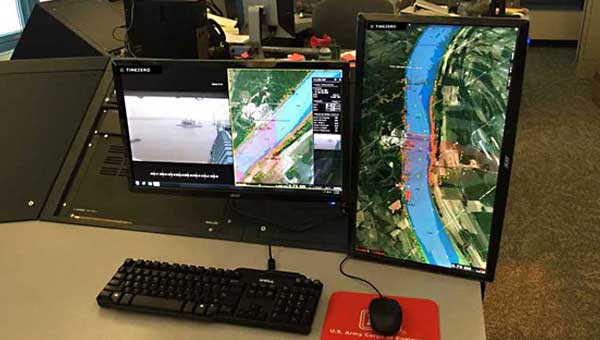Main concerns of Waterside Facilities
Traffic control
Many of the waterside facilities need to monitor and control the traffic of boats and other vessels in the vicinity. For these establishments, accidents from collision can cause expensive damage to the facility infrastructure. On rivers, loose objects such as barges or loose vessels can be carried by the flow and cause great damage.
Security and Threats
Sensitive waterside facilities must be prepared for all possible security threats. Terrorism attacks and theft are two of the most serious threats.
Explosive Motor Bombs ("EMB"s) have been used in the past, and involve explosives loaded onto a boat, which is then sent in the direction of the facility being attacked.
Theft and other criminal acts can also occur, depending on the type of facility. A boat can be used to make a fast getaway by criminals, so the waterside location can make the facility an easy target.
Prevention is better than cure in each of these situations, so businesses should learn about available security solutions and install the one that fits their needs before any incident occurs.
It is an investment that offers peace of mind and can help avoid a costly or dangerous event.
Safety and rescue
Being beside the water means that there is always a risk of accidents taking place. On land employees may fall into the water by accident, or boat passengers can go overboard. If this happens, it is extremely important to have a rescue strategy in place that will allow you to respond instantly to the situation.
This could save a life and so should be the number one priority. However, a successful rescue requires powerful tools that help you to react effectively which must be installed in advance.
Weather
Bad weather conditions can cause poor visibility, dangerously choppy waters and accidents. Vessels may be caught unaware when navigating towards port and experience difficulty in controlling the boat which can easily lead to a man overboard or damage to infrastructure and the boat itself.
Heavy fog often causes poor visibility. This can prevent regular CCTV cameras from clearly viewing and recording events such as accidents. It can also make it impossible to see what exactly triggered an alarm to sound.
The solutions offered by TZ Coastal Monitoring

Management of vessel traffic and prevention of terrorist activity
Installing the TZ Coastal Monitoring system will help your waterside facility to simply manage the vessel traffic and berthing in the area. Connect an AIS receiver so that you can view vessel positions, movements and information in real time on the nautical chart. It is also easy to set up customized boundary areas, and alarms, which are essential for avoiding collisions.
By connecting one or multiple radars to the system, anything on the water within the radar(s) range will be visible on-screen in real time. A radar is mandatory for monitoring loose objects or any vessels that don’t have an AIS transmitter. TZ Coastal Monitoring can be setup to trigger a very specific alarm when an object or vessel has been detected by the radar without a correlated AIS target indicating a possible threat.
TZ Coastal Monitoring allows you to connect and integrate several type of cameras, so that all areas of your waterside facility can be monitored and viewed at all times. Thermal cameras will allow the operator to see a visible image even in the dark of night.
Add on the Record and Replay module so that you can record all data (Radar, Targets, and Cameras) at all times directly to your hard drive. This will allow you to review the traffic and in case of a collision or terrorist-related incidents, you will be able to refer back to the video to see exactly what happened. This information can prove critical for insurance or administrative reasons.
The features mentioned above also apply to safety and rescue situations. Radars and cameras can be controlled directly from the software system and the user can quickly lock-on and track certain targets, such as a man in the water. The advantage of integrating thermal cameras with TZ Coastal Monitoring is that objects are clearly visible even in total darkness. People are particularly visible with heat detecting cameras. If employees working near the water are fitted with an AIS SART beacon inside the life jacket, TZ Coastal Monitoring can automatically trigger an alarm when a man falls in the water.
First of all, it is easy to download detailed weather forecast files for the area. This can be updated several times a day so that it is as accurate as possible. This allows the manager of the waterside facility to be adequately prepared for any inclement weather conditions. The weather reports can be superimposed on the chart displayed in your TZ Coastal Monitoring software so that you can clearly visualize the weather progression.
It is also possible to connect weather sensors, such as a wind sensor to the system. This provides real-time weather information that can serve as an additional aid when determining weather forecasts for the near future.
Installation Diagram Example
The figure (Fig.1) highlights a typical installation at a waterside facility:
One Radar
Two Thermal Cameras (up to 12 cameras can be connected)
One AIS receiver is used to receive the position of vessels that have an AIS transmitter and detect AIS SART (man falls in the water)
One computer that is used by the local operator to monitor activities
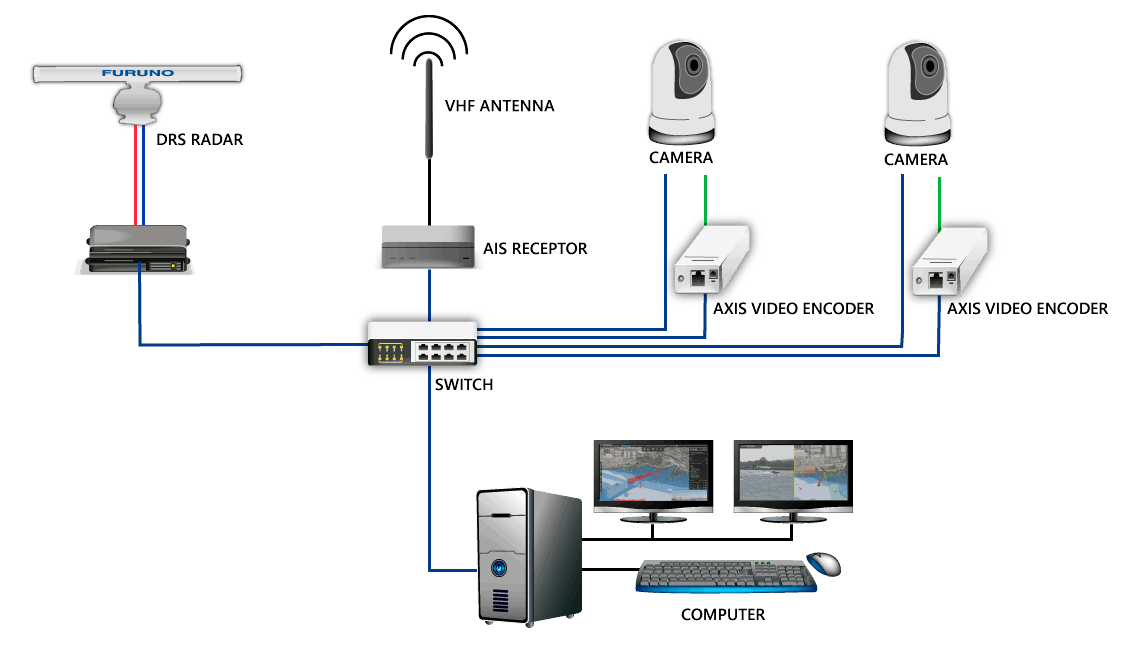
Water facilities - Fig.1
Users
These are just a few of the functions offered by TZ Coastal Monitoring which make the system perfectly-suited to all types of waterside facilities.
Here are a few examples of waterside sites that could benefit from the functions offered by TZ Coastal Monitoring:
Airfields, shore facilities
Warehouses
Passenger and marine container terminal yards
Liquid natural gas (LNG) facilities
Piers
Wharves
Docks (graving dock, dry dock)
Jetties
Fleet moorings
Moles
Breakwaters
Seawalls
Buildings for shops, offices, conferences and hotels, and other structures adjacent to water

